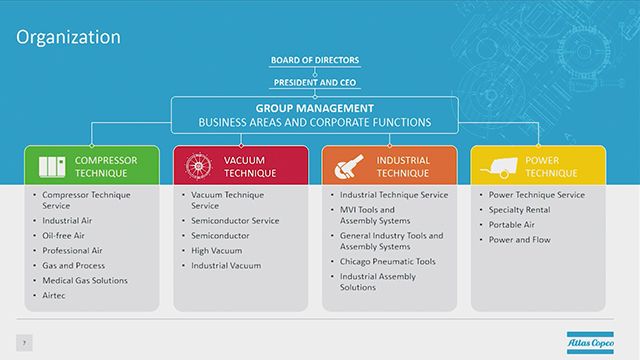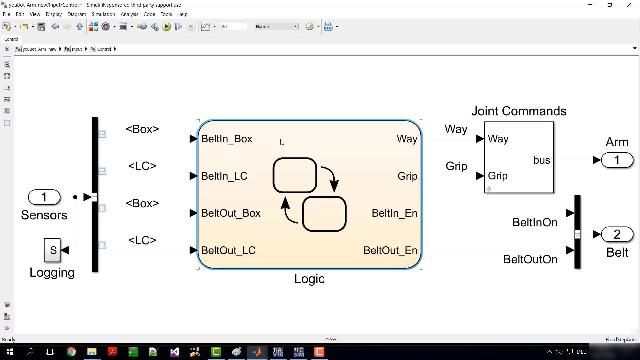What Is Industry 4.0?
Industry 4.0 (or the fourth Industrial Revolution) is the automation of traditional manufacturing and industrial processes using technologies such as Industrial IoT, big data analytics, artificial intelligence, robotics, and autonomous systems. Industry 4.0 aims to:
- Increase manufacturing capability, productivity, and efficiency
- Enable flexible, customer-centric production
- Reduce operation and maintenance cost

The term, Industry 4.0, a follow-on to the first three industrial revolutions, was first introduced in 2012 by the Working Group on Industry 4.0, which presented a set of Industry 4.0 implementation recommendations to the German federal government to promote the computerization of manufacturing. Six working groups, with experts from business, associations, work councils, and academia, are developing pre-competitive concepts, solutions, and recommendations in areas such as standardization, IT security, and economic, legal, and social dimensions. Related terms are smart manufacturing, smart factory, and factory of the future.
Why Industry 4.0?
Industry 4.0 has the promise to increase manufacturing connectivity between machines and between machines and humans in both physical and virtual worlds through OPC UA. OPC UA helps address the interoperability challenge by being the communication protocol that connects IT systems (ERP, CRM, etc.) and OT systems (PLCs, SCADA, Industrial IoT, etc.). Industry 4.0 also enables optimal decision-making by using data driven approaches such as statistical analysis, predictive analytics, AI, machine learning, and deep learning.
The potential benefits of Industry 4.0 vary by organization.
Original Equipment Makers (OEMs)
OEMs often create models during the design of their production equipment. Industrial IoT enables those models to become digital twins of the operating machines to optimize machine performance given the specific operating state and condition. OEMs can also provide predictive maintenance as a value-added service to factory operators to increase the reliability, availability, and maintainability (RAM) of their equipment. At the same time, OEMs may also be able to get feedback on their equipment performance in the field for future design improvement.
System Integrators
System integrators help factory operators establish interconnections between production equipment, perform system integration, deliver factory-level performance, and enable visibilities and analytics of the overall process through cloud-based or on-premise infrastructure. System integrators may also develop digital twins of the whole factory process to enable virtual commissioning of the factory to validate and optimize factory performance without having to wait for the completion of physical factory construction and equipment installation.
Factory Operators
Factory operators want to keep their factory running at the optimal efficiency, maximal productivity, and lowest operational and maintenance costs while producing products that meet their customers’ requirements on features, quality, speed, and cost. Industry 4.0 benefits for factory operators (including OEMs that have their own factories) can be characterized in these four areas:
Flexible Production
Easily adapt to changes in the type and quantity of the product in production.

Flexible production, in which different car models can be assembled using the same production line.
Mass Customization
Combine the flexibility and personalization of customer-made products with low unit costs associated with mass production.

Mass customization workflow.
Learn More
Operational Performance Optimization
Use sensor data, digital twins, statistical analyis, machine learning, and AI algorithms to identify and prevent process inefficiencies.
Learn More
Reliability, Availability, and Maintainability (RAM)
Use predictive maintenance and prescriptive maintenance to reduce operation and maintenance (O&M) cost and the impact of machine failures or process breakdowns.

The progression of maintenance strategies.
Learn More
The benefits that Industry 4.0 can bring will get deeper and broader as technology advances. For example, when 5G technology becomes more a feasible and practical, factory operators will make better decisions based on faster, real-time data. They can also apply virtual reality (VR) and augmented reality (AR) in their operation, maintenance, and training activities to further increase productivity and efficiency. Similarly, OEMs and system integrators can use VR/AR to generate more value-added services for factory operators and help themselves in the product design, simulation, and commissioning.
Industry 4.0 with MATLAB and Simulink
Industry 4.0 is a set of technologies that work together to enable manufacturers to have a sustainable and profitable future. It is a digital transformation journey that needs vision, commitment, and value creation along the way. Each organization is different and so is their journey.
Learn more about how MATLAB and Simulink can help you to go through the Fourth Industrial Revolution and generate value for your digital transformation.
Increase Connectivity
- Industrial Communication Toolbox: Read, write, and log OPC data from devices such as distributed control systems, SCADA, and PLCs; exchange data over Modbus or MQTT; and access data directly from an AVEVA™ PI™ system
- Internet of Things: Connect embedded devices to the Internet and gain insight from your data
Increase Automation
- Robotics: Convert your robotics ideas and concepts into autonomous systems that work seamlessly in real-world environments
- Automatic Code Generation for Embedded Control Systems Design, code, and verify embedded systems
Make Data-Driven Decisions
- Data Science: Explore data, build machine learning models, and do predictive analytics
- Predictive Analytics: Use historical data to predict future events
- Machine Learning: Train models, tune parameters, and deploy to production or the edge
- Artificial Intelligence: Simulate intelligent human behavior to perceive the environment, understand its behavior, and take action
Digital Transformation
- Digital Twins: Build an up-to-date model of an actual physical (or to-be-built) asset in operation
- Model-Based Design: Use models to drive requirements, development, design, implement, and testing
- Model-Based System Engineering: Design, analyze, and test system and software architectures
Learn More
See also: industrial automation and machinery, IoT, predictive maintenance






